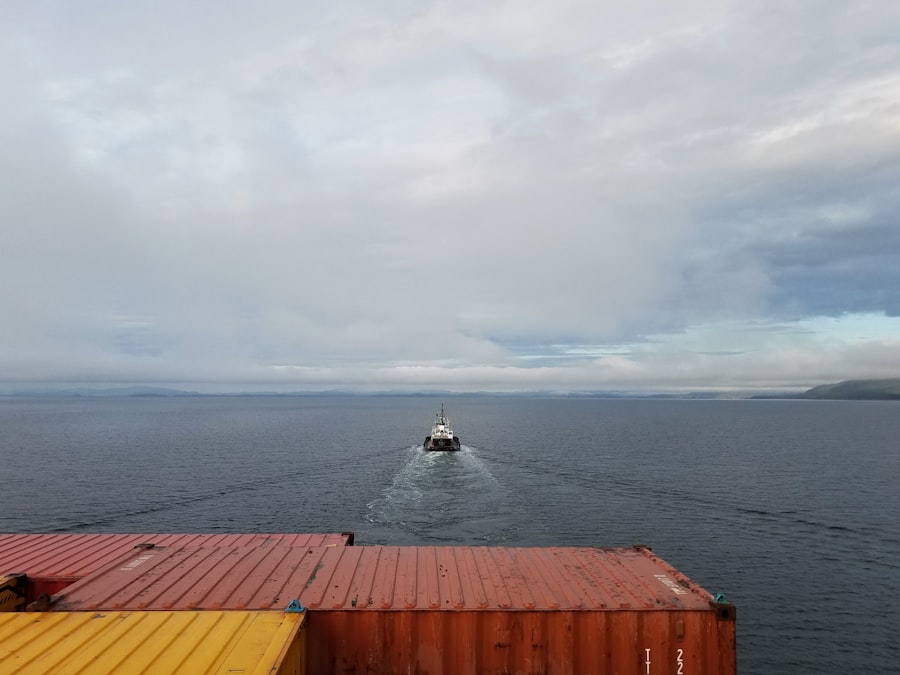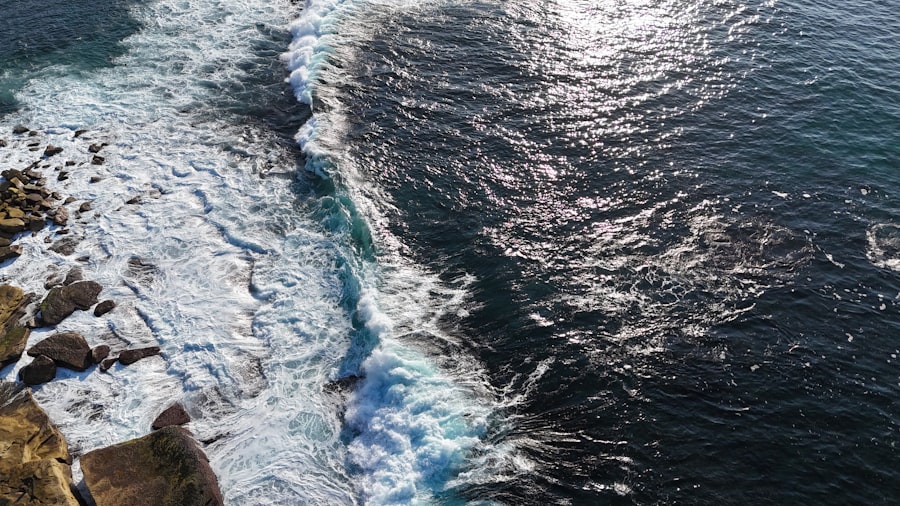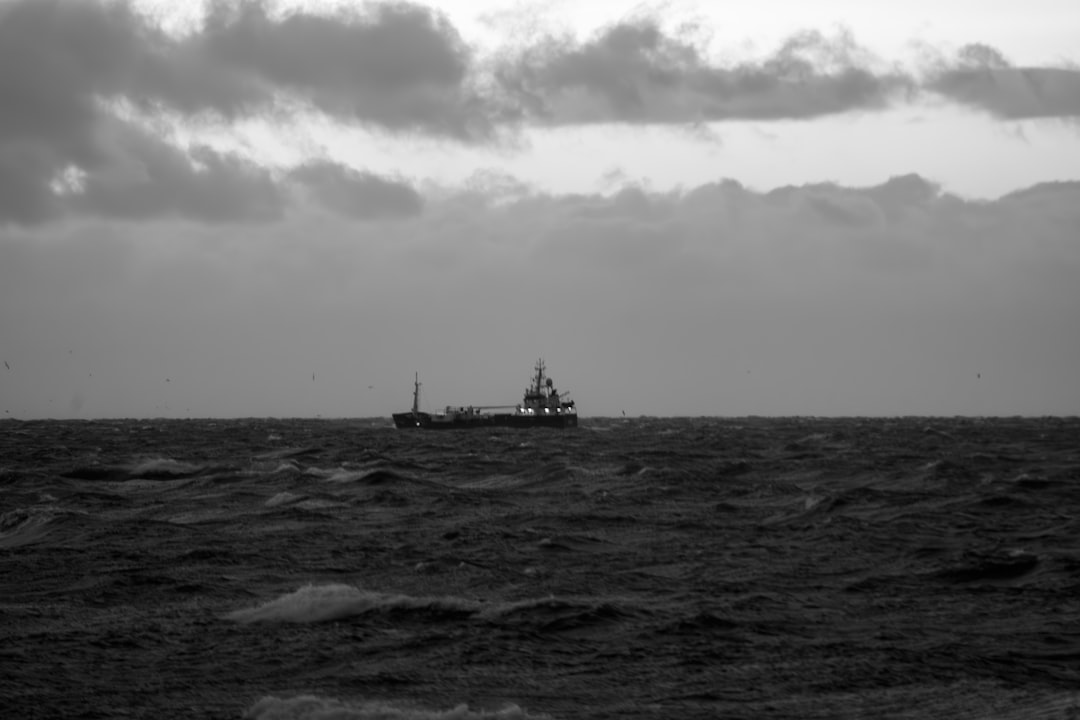The Drake Passage, a body of water situated between the southern tip of South America and Antarctica, is renowned for its tumultuous seas and unpredictable weather. Spanning approximately 800 kilometers (500 miles) in width, it serves as a critical maritime route for vessels traveling to and from the Antarctic region. Named after the English explorer Sir Francis Drake, who navigated these waters in the late 16th century, the passage is often regarded as one of the most challenging maritime routes in the world.
Its strategic importance cannot be overstated, as it connects the Atlantic and Pacific Oceans, facilitating not only commercial shipping but also scientific research expeditions to Antarctica. The passage is characterized by its unique geographical features, including the convergence of the Antarctic Circumpolar Current, which flows unimpeded around the globe. This current plays a significant role in regulating global climate patterns and oceanic ecosystems.
The Drake Passage is also notable for its deep waters, with depths reaching over 4,000 meters (13,000 feet), making it a vital area for marine biodiversity. Understanding the dynamics of this passage is essential for anyone considering a journey through its waters, as it presents both opportunities and challenges for navigation and exploration.
Key Takeaways
- The Drake Passage is a narrow body of water between South America’s Cape Horn and the South Shetland Islands of Antarctica, known for its rough seas and strong winds.
- The weather in the Drake Passage is unpredictable and can change rapidly, with strong winds, high waves, and potential for storms.
- The Drake Passage is home to a diverse range of wildlife, including whales, seals, and various seabird species.
- Navigating the Drake Passage presents challenges such as icebergs, strong currents, and limited visibility due to fog and rough weather conditions.
- Safety precautions for crossing the Drake Passage include securing all loose items, wearing appropriate clothing, and following instructions from the crew.
Weather and Climate in the Drake Passage
The weather in the Drake Passage is notoriously volatile, with conditions that can change rapidly and without warning. The region experiences strong winds, heavy precipitation, and significant wave heights, making it a formidable environment for seafarers. The prevailing westerly winds can create rough seas, particularly during the winter months when storms are more frequent.
Sailors often describe the passage as having a personality of its own, with calm days quickly giving way to tempestuous conditions that can test even the most experienced mariners. Temperature variations are also a hallmark of the Drake Passage’s climate. During the summer months, temperatures can range from 0°C to 10°C (32°F to 50°F), while winter temperatures can plummet well below freezing.
The presence of icebergs and sea ice further complicates navigation during certain times of the year. Understanding these climatic factors is crucial for anyone planning to traverse the passage, as they can significantly impact travel schedules and safety measures.
Wildlife in the Drake Passage

The Drake Passage is not only a challenging maritime route but also a rich habitat for diverse marine wildlife. The nutrient-rich waters support an array of species, including various types of fish, seals, and seabirds.
These birds are known for their impressive wingspans and remarkable ability to cover vast distances with minimal energy expenditure. In addition to avian life, the passage is home to several species of whales, including humpback whales, orcas, and minke whales. These magnificent creatures migrate through the waters in search of food and breeding grounds.
The presence of such wildlife makes the Drake Passage a prime location for eco-tourism and wildlife observation. For those fortunate enough to witness these animals in their natural habitat, it can be a profoundly moving experience that underscores the importance of preserving these ecosystems.
Navigational Challenges
| Location | Number of Navigational Challenges | Severity |
|---|---|---|
| City A | 25 | High |
| City B | 15 | Medium |
| City C | 30 | High |
Navigating the Drake Passage presents numerous challenges that require skill and experience. The combination of strong currents, unpredictable weather patterns, and shifting icebergs creates a complex environment for mariners. The passage is known for its steep waves, which can reach heights of up to 15 meters (49 feet) during storms.
These conditions demand constant vigilance and adaptability from those at the helm. Moreover, the lack of reliable navigational aids in certain areas adds to the difficulty of crossing the passage. While modern technology has improved navigation capabilities, mariners must still rely on traditional seamanship skills to interpret weather patterns and ocean currents accurately.
Understanding these challenges is essential for anyone planning to navigate this formidable stretch of water, as preparation and knowledge can make all the difference in ensuring a safe passage.
Safety Precautions for Crossing the Drake Passage
Given the inherent risks associated with crossing the Drake Passage, safety precautions are paramount. Mariners are advised to conduct thorough pre-voyage preparations, including detailed weather assessments and equipment checks.
Additionally, vessels should be equipped with reliable communication systems to maintain contact with shore-based support. Training and experience play vital roles in ensuring safety during the crossing. Crew members should be well-versed in emergency procedures and capable of responding effectively to unexpected situations.
Regular drills can help reinforce these skills and build confidence among crew members. By prioritizing safety measures and fostering a culture of preparedness, those embarking on a journey through the Drake Passage can significantly reduce risks associated with this challenging maritime route.
Choosing the Right Vessel for Crossing

Selecting an appropriate vessel for crossing the Drake Passage is a critical decision that can impact both safety and comfort during the journey. The ideal vessel should be robust enough to withstand harsh conditions while providing adequate amenities for passengers and crew. Ice-strengthened ships are often recommended for voyages in this region due to their enhanced structural integrity and ability to navigate through icy waters.
In addition to structural considerations, vessel size plays a significant role in determining suitability for crossing the passage. Smaller vessels may offer greater maneuverability but can be more susceptible to rough seas. Conversely, larger ships may provide more stability but could face challenges in navigating narrow passages or avoiding icebergs.
Ultimately, choosing the right vessel requires careful consideration of various factors, including intended travel dates, passenger comfort levels, and specific route plans.
Tips for Managing Seasickness
Seasickness is a common concern for many travelers embarking on a journey through the Drake Passage. The unpredictable nature of the waters can lead to discomfort for even seasoned sailors. To mitigate these effects, several strategies can be employed.
One effective approach is to choose accommodations wisely; cabins located in the middle of the ship tend to experience less motion than those at either end. Additionally, travelers are encouraged to stay hydrated and consume light meals before and during their journey. Ginger tea or ginger candies are often recommended as natural remedies for nausea.
Over-the-counter medications specifically designed to combat motion sickness can also be beneficial; however, it is advisable to consult with a healthcare professional before taking any medication. By taking proactive measures to manage seasickness, travelers can enhance their overall experience while crossing this challenging passage.
Emergency Protocols in the Drake Passage
In an environment as unpredictable as the Drake Passage, having well-defined emergency protocols is essential for ensuring passenger safety. Vessels should have comprehensive emergency plans that outline procedures for various scenarios, including man-overboard situations, medical emergencies, or severe weather events. Crew members must be trained in these protocols and conduct regular drills to ensure readiness.
Communication is key during emergencies; vessels should maintain contact with nearby ships or coast guard services to facilitate swift assistance if needed. Additionally, having an inventory of emergency supplies on board—such as first aid kits, life rafts, and signaling devices—can prove invaluable in critical situations. By establishing clear emergency protocols and fostering a culture of preparedness among crew members and passengers alike, those traversing the Drake Passage can navigate potential crises with greater confidence.
Historical Significance of the Drake Passage
The historical significance of the Drake Passage extends far beyond its challenging waters; it has played a pivotal role in maritime exploration and trade since its discovery. Sir Francis Drake’s expedition in 1578 marked one of the first European navigations through these treacherous waters, paving the way for future explorers seeking new trade routes to Asia and beyond. The passage became a crucial link between Europe and the Americas during an era characterized by exploration and colonization.
Throughout history, many notable figures have traversed these waters in pursuit of adventure or scientific discovery. The passage has served as a gateway for expeditions aimed at understanding Antarctica’s unique ecosystems and climate patterns. Today, it continues to attract researchers and adventurers alike who seek to uncover its mysteries while honoring its rich legacy as a site of exploration and discovery.
Environmental Conservation in the Drake Passage
As awareness of environmental issues grows globally, so too does recognition of the need for conservation efforts in sensitive regions like the Drake Passage. The waters surrounding Antarctica are home to fragile ecosystems that are increasingly threatened by climate change, pollution, and overfishing. Various international agreements aim to protect these ecosystems by regulating fishing practices and minimizing human impact on marine life.
Organizations dedicated to marine conservation work tirelessly to raise awareness about the importance of preserving biodiversity in this region. Initiatives such as marine protected areas (MPAs) have been established to safeguard critical habitats from exploitation while promoting sustainable practices among local communities and industries. By prioritizing environmental conservation efforts in the Drake Passage, stakeholders can help ensure that future generations will continue to benefit from its rich natural resources.
Planning Your Journey through the Drake Passage
Planning a journey through the Drake Passage requires careful consideration of various factors to ensure a safe and enjoyable experience. Travelers should begin by researching potential travel dates based on weather patterns and wildlife migration seasons. Engaging with reputable tour operators who specialize in Antarctic expeditions can provide valuable insights into itinerary options and vessel choices.
Additionally, travelers should prepare for varying weather conditions by packing appropriate clothing layers suitable for cold temperatures and wet environments. It is also advisable to familiarize oneself with safety protocols onboard and participate in pre-voyage briefings offered by crew members. By taking these steps into account when planning their journey through this remarkable passageway, adventurers can embark on an unforgettable experience that combines exploration with respect for nature’s wonders.
The Drake Passage is often regarded as one of the most treacherous sea routes in the world, notorious for its unpredictable weather and rough seas. This narrow body of water between the southern tip of South America and Antarctica is a challenge for even the most experienced sailors. For those interested in learning more about the geographical and historical significance of such perilous passages, you might find this related article insightful. It delves into various geographical phenomena and their impacts on navigation and exploration.
WATCH NOW! Drake Passage: Earth’s Deadliest Waters Revealed
FAQs
What is the Drake Passage?
The Drake Passage is the body of water between the southern tip of South America and the northern tip of the Antarctic Peninsula. It is known for its rough seas and challenging sailing conditions.
Is the Drake Passage dangerous?
Yes, the Drake Passage is considered one of the most dangerous sea routes in the world due to its strong winds, large waves, and unpredictable weather conditions. It is notorious for its rough seas and has earned the nickname “Drake Shake” due to the turbulent waters.
Why is the Drake Passage so dangerous?
The Drake Passage is located in a region where the Atlantic, Pacific, and Southern oceans converge, creating a natural funnel for strong winds and currents. The combination of these factors makes the passage prone to severe storms and rough seas.
Are there any safety measures in place for crossing the Drake Passage?
Experienced captains and crew members are essential for navigating the Drake Passage safely. Many ships that traverse the passage are equipped with advanced navigation and stabilization systems to help mitigate the rough conditions.
Are there any alternatives to crossing the Drake Passage?
Some travelers opt to fly over the Drake Passage instead of sailing through it. This option provides a quicker and more comfortable way to reach Antarctica, but it does not offer the same experience as a sea voyage.
